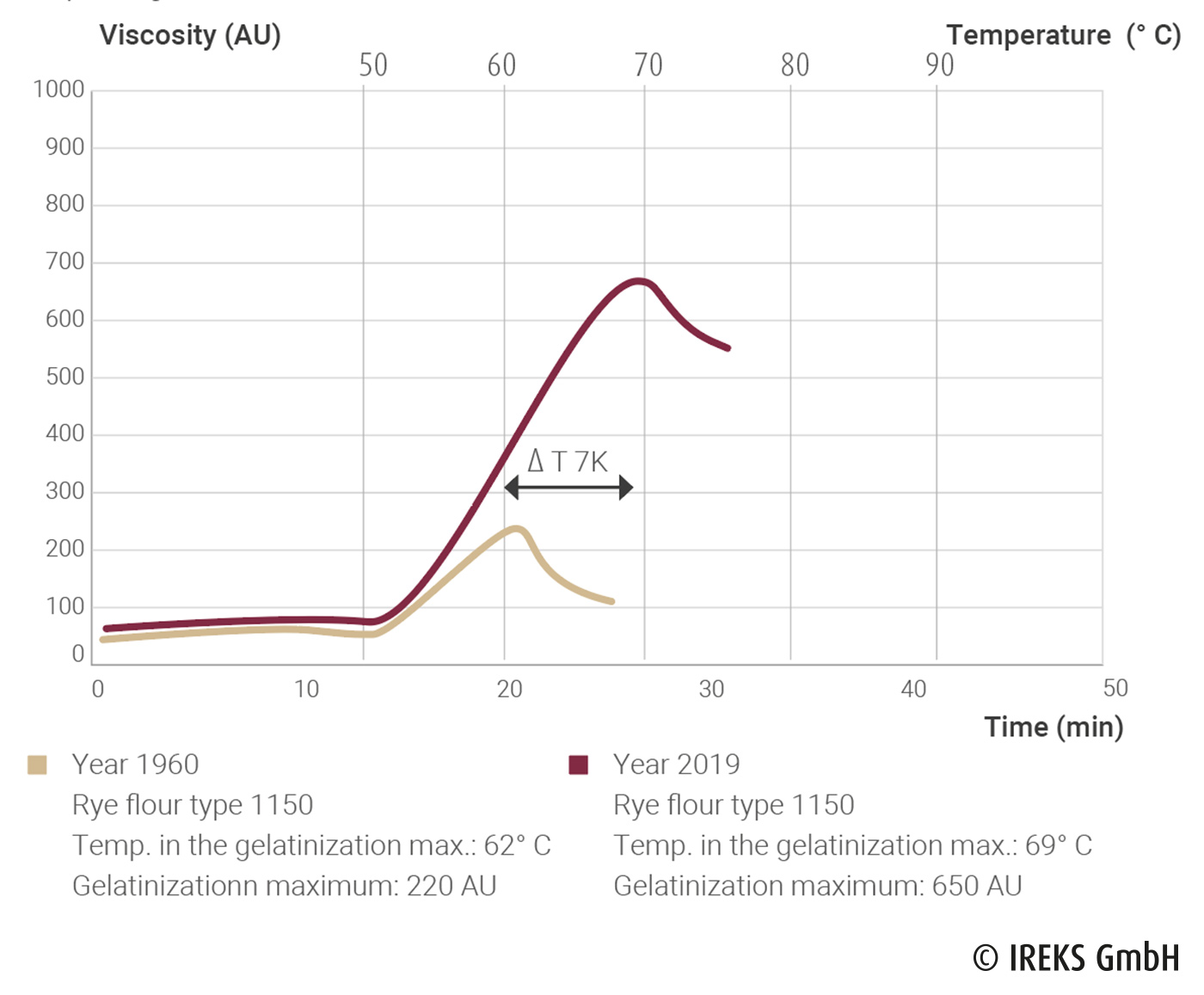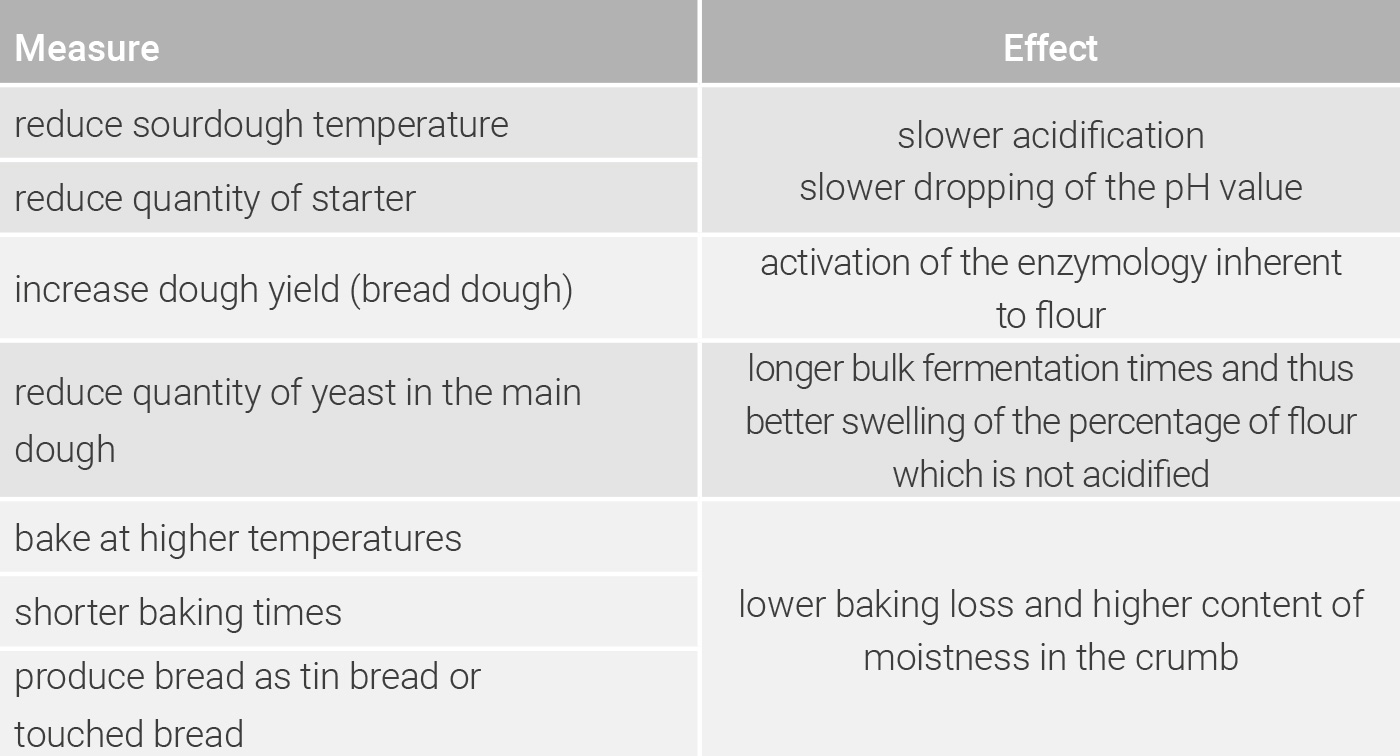Since the beginning of the 1970s, hybrid varieties of rye, a crossing of two types of rye with defined properties, have been cultivated. These new varieties are more resistant to sprouting and have a stronger yield, but are also poorer in enzymes than the earlier types of rye. They have contributed considerably to the fact that the previously greatly feared damage due to sprouting in the case of rye is practically no longer of importance today. The changes in the rye flour quality become clear when the analysis values in regard to the falling number and amylogram from 1960 are compared to the values of the present time.
Table 8.14: Changes in the average analysis values in the case of falling number and amylogram with rye flour from 1960 to 2019
As a result of their lower enzyme activity and the corresponding properties of the starch, the present-day rye flours lead more frequently to faults, such as a too small volume of bread, a poorly aerated, dry crumb with dry tears as well as inadequate freshkeeping of the bread, although the new varieties of rye can absorb up to 10 % more water than the varieties of 60 years ago.
In earlier times, the most important task of the sourdough was to ensure the baking
capability of the rye, i.e. the formation of a closed and elastic bread crumb. In the case of the new rye varieties, an optimization of the crumb properties is primarily involved, because as much acid is no longer required. To enhance the bread freshkeeping and the bread aroma of the mixed rye and mixed wheat bread, the traditional sourdough methods can be adjusted accordingly.
For this, an attempt is made to introduce a higher percentage of pre-swollen flour ingredients into the bread dough to increase the enzymology inherent to the flour. In this way, the freshkeeping and the crumb texture of the bread are enhanced. This is achieved by the addition of higher quantities of sourdough with a lower degree of acidity. To avoid a too rapid and a too strong formation of acid, low starter quantities and starter temperatures as well as high dough yields and thus longer standing times should be used. In the case of the bread doughs, attention should be paid that the dough temperatures are not above 28° C and that too high quantities of addition of yeast are not chosen.




